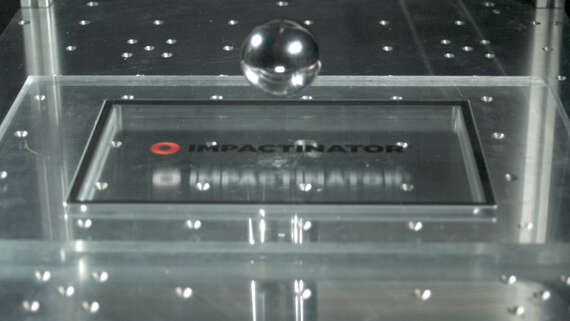What is the Rockwell Hardness Test?
The Rockwell hardness test is a widely used method to measure the hardness of materials, providing crucial insights into their resistance to deformation. Developed by Stanley P. Rockwell in the early 20th century, this test has become a standard in industries ranging from automotive to aerospace. It quantifies hardness by measuring the depth of penetration of an indenter under a large load compared to the penetration made by a preload. The simplicity, speed, and accuracy of the Rockwell hardness test make it a preferred choice for quality control in manufacturing processes.
The Mechanics of the Test
At the core of the Rockwell hardness test lies a straightforward yet precise procedure. A diamond or ball indenter is pressed into the material's surface with a minor load, followed by a major load. The depth of the indentation, created by the major load, is measured once the major load is removed. This depth is then converted into a Rockwell hardness number (HR) using a specific formula. The scale used (e.g., Rockwell B, Rockwell C) depends on the material type and the indenter used, ensuring accurate readings for a wide range of materials.
Different Scales and Their Applications
The Rockwell hardness test employs various scales to accommodate different materials and applications. For instance, the Rockwell B scale (HRB) uses a 1/16-inch ball indenter and is typically used for softer materials like aluminum and copper alloys. Conversely, the Rockwell C scale (HRC) uses a diamond cone indenter and is ideal for harder materials such as steel and titanium alloys. Each scale provides a tailored approach to measuring hardness, ensuring that the results are relevant and reliable for specific materials and applications.
Advantages of the Rockwell Hardness Test
One of the primary advantages of the Rockwell hardness test is its non-destructive nature, meaning the test material remains largely intact post-testing. Additionally, the test is quick, often taking only a few seconds to complete, and provides immediate results. The simplicity of the test procedure reduces the likelihood of operator error, ensuring consistent and repeatable results. This combination of speed, accuracy, and non-destructiveness makes the Rockwell hardness test an invaluable tool in production environments where quality control is paramount.
Application in Various Industries
The versatility of the Rockwell hardness test extends across numerous industries. In the automotive sector, it ensures that engine components meet stringent durability standards. Aerospace manufacturers rely on it to verify that critical components can withstand extreme conditions. In the construction industry, it helps assess the suitability of materials for structural applications. Even consumer electronics benefit from Rockwell testing, as it ensures the longevity and reliability of components subjected to daily wear and tear. This widespread applicability underscores the test’s importance in maintaining high-quality standards across diverse fields.
Understanding Test Limitations
While the Rockwell hardness test is highly beneficial, it is essential to understand its limitations to use it effectively. The test may not be suitable for very thin materials or coatings, as the indentation could exceed the material thickness, leading to inaccurate results. Additionally, surface conditions such as roughness or cleanliness can affect the test outcomes. Recognizing these limitations and preparing the material appropriately can help mitigate potential inaccuracies, ensuring reliable hardness measurements.
Comparison with Other Hardness Tests
The Rockwell hardness test is one of several methods available for measuring material hardness. Compared to the Brinell or Vickers hardness tests, Rockwell offers faster results with simpler equipment. The Brinell test, for instance, involves a larger indentation and is better suited for heterogeneous materials, while the Vickers test, with its pyramid-shaped indenter, is ideal for thin materials and coatings. Each method has its strengths, but the Rockwell test’s efficiency and ease of use make it a popular choice for many applications.
Preparing for the Rockwell Hardness Test
Proper preparation is key to obtaining accurate Rockwell hardness measurements. The test surface should be smooth and free from contaminants, as any irregularities can affect the indenter’s penetration. Additionally, the test material should be securely mounted to prevent any movement during testing. Understanding and controlling these preparation variables ensure that the test results are reliable and reflective of the material’s true hardness.


